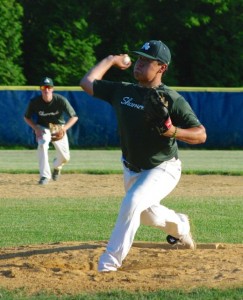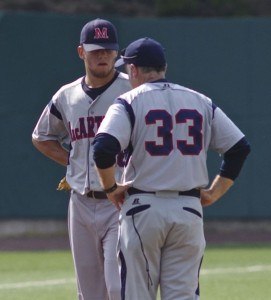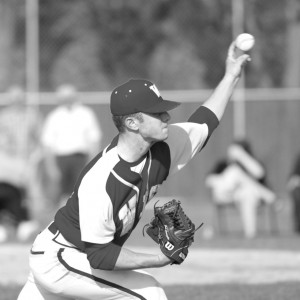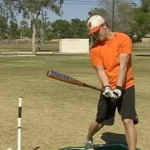Ignore your kids grades…
 (0)
(0)
 What if I told you to ignore the grades your kids bring home from school? You’d think that I was ridiculous, and you’d be correct. Although grades don’t completely define your child’s current level of intelligence or their ultimate level of success, they sure are a convenient indicator of how they are doing amongst their classmates now.
What if I told you to ignore the grades your kids bring home from school? You’d think that I was ridiculous, and you’d be correct. Although grades don’t completely define your child’s current level of intelligence or their ultimate level of success, they sure are a convenient indicator of how they are doing amongst their classmates now.
But that’s how many people treat baseball performance. They don’t want to count anything, and they don’t. Unfortunately, many baseball instructors don’t want to be held accountable for the performance of the players they train. Personally, I find that to be irresponsible and unacceptable. And you wouldn’t accept that lack of accountability from any other type of teacher.
Some players and coaches consider baseball as a very casual hobby. That’s fine, because baseball is awesome if you are a fan, a casual player, or have serious ambitions at higher levels. If you’re reading this, I think you treat the sport as something in which you’d like to succeed. It’s got roots in my soul, too.
Baseball teaches us many lessons in life. How to work together as a team. How you must practice on your own if you want to improve. Failure is frequent, but never fatal. Parents, encouraging your kids to be competitive will not decrease their fun. In fact, it will make the time they spent practicing and playing more valuable. Your ballplayer will learn to work to earn success, and not just have it when it happens to them accidentally. What lesson do you want young people to learn?
 As life goes on, we all are measured in many ways. You’ll get a credit score, which will influence at what rate your car or home loan will be. In a hospital, they’ll measure your temperature (to see if you’re getting healthier or sicker). You’ll take the ACT or SAT tests to allow colleges to accept you or not. And in most jobs, you are measured by your results.
As life goes on, we all are measured in many ways. You’ll get a credit score, which will influence at what rate your car or home loan will be. In a hospital, they’ll measure your temperature (to see if you’re getting healthier or sicker). You’ll take the ACT or SAT tests to allow colleges to accept you or not. And in most jobs, you are measured by your results.
I agree with many coaches and the ASMI in Birmingham. Improving your speed should not your only goal. But how do you know if you are “improving your mechanics?” To improve your performance in anything, you need to become more efficient. And measuring your results shows if you are getting better or not. If you are slacking or not. If you are hurt or tired or not. And, most importantly, if you are getting more efficient or not. You can’t get to where you’re going if you don’t know where you really stand.
When kids are very young (eight or less), I don’t measure much of what they do. But as their youth leagues get competitive, meaning that they keep score, I start to count and measure the performance of ballplayers.
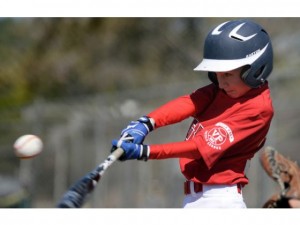 I have taught batting to a young man named Logan for several years now. His parents saw me measuring the swing speed of the older kids as they swung, and writing down their bat speeds. Although I said it was unnecessary at the time, when Logan was six years, his dad insisted I measure his swing speed just like the “big kids” I train. So we did, and we knew what his swing speed was. We worked on making him more efficient. His swing speed improved and we knew because he measured it. Logan is now one of the best two or three hitters for his age in his entire Little League. This came from several factors, but one of them was objectively measuring his performance.
I have taught batting to a young man named Logan for several years now. His parents saw me measuring the swing speed of the older kids as they swung, and writing down their bat speeds. Although I said it was unnecessary at the time, when Logan was six years, his dad insisted I measure his swing speed just like the “big kids” I train. So we did, and we knew what his swing speed was. We worked on making him more efficient. His swing speed improved and we knew because he measured it. Logan is now one of the best two or three hitters for his age in his entire Little League. This came from several factors, but one of them was objectively measuring his performance.
 We’ve used great products for years in our personal training at Ballplayers Academy to help us measure how our ballplayers are performing and improving. One of them is the Swing Speed Radar. It’s designed and made by Sports Sensors of Cincinnati, a small company like us.
We’ve used great products for years in our personal training at Ballplayers Academy to help us measure how our ballplayers are performing and improving. One of them is the Swing Speed Radar. It’s designed and made by Sports Sensors of Cincinnati, a small company like us.
Efficient bat swing movements produce maximum swing speed. A ballplayer can use the Swing Speed Radar with his parents, coach or instructor, at a practice facility, field or at home, and while practicing on their own. It provides a basis for measuring improvement. Get it now by clicking here. It will help improve his swing path, swing speed, and his hits will get outta here in a hurry!
Once again, thanks for supporting our small businesses in America.


